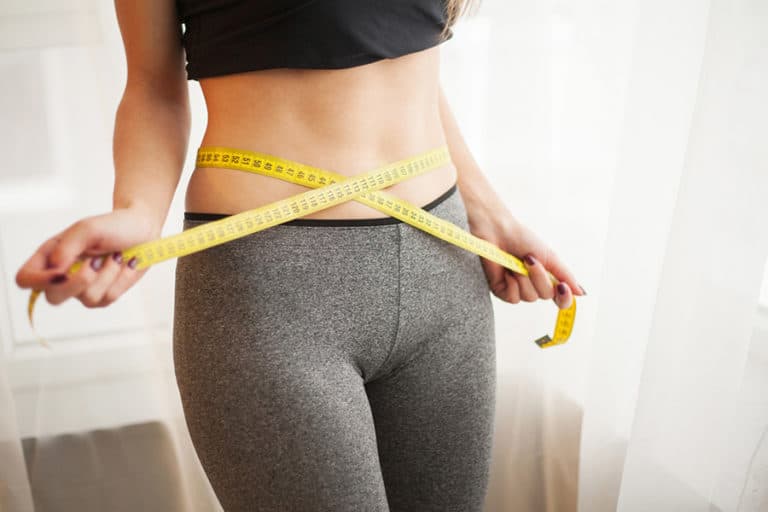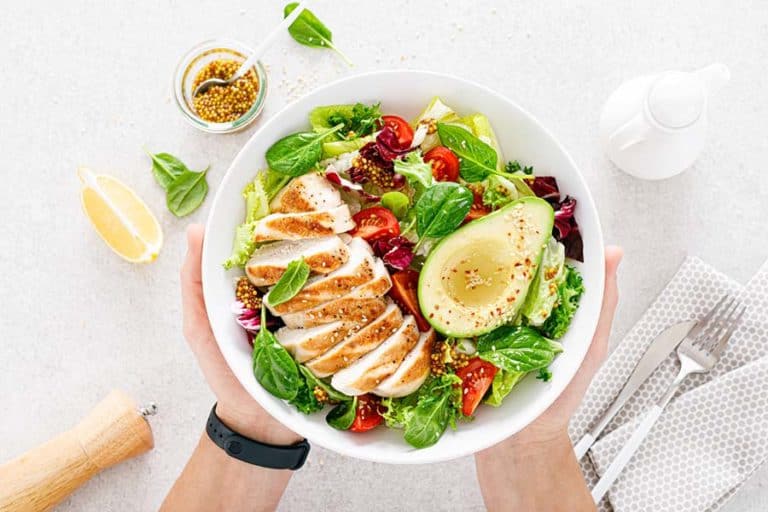Losing Inches but not Weight? Here’s What to Do

inch loss vs weight loss | Reasons | what to do | lose inches only | weight loss factors | weight loss progress | which is better | FAQs
If you are seemingly losing inches but not weight from your body, then it’s time to develop a fresh perspective on body weight measurement. Here we analyze the complex relationship between weight and body composition.
Weight loss scales are often misleading since they do not indicate fat loss. Hence, you might be working out but not losing weight.
Weight loss scales are often misleading since they do not indicate fat loss. Hence, you might be working out but not losing weight.
Difference between inch loss and weight loss
Weight loss is the reduction in overall body weight resulting from diet, exercise, or both.
Inch loss is losing body fat from specific areas, such as thighs, buttocks, waist, arms, etc. When you lose fat from your body, changes show up in these body parts. For example, when you do strength training, you tend to burn fat and build muscle. So, even if you lose inches from your midsection, those changes might not be visible on the scale.
Reasons why you are losing inches but not weight
If you have been wondering why you have been losing inches instead of weight, here are some possible reasons:
1. Losing weight but gaining muscle simultaneously
One of the primary reasons behind losing inches but not weight is the increase in muscle mass.
This happens when you are trying to lose fat with your exercise and diet but also performing strength training exercises to maintain weight. This process of losing fat and gaining muscle simultaneously is referred to as body recomposition.
Experts say that strength training, when combined with a low-calorie, high-protein diet, results in body recomposition. The extra muscle you gain eventually, engenders no or slower weight loss.
2. Water retention
Water retention causes your weight to fluctuate. Your body retains water for several reasons, the major ones being:
- Stress
- Excess sodium or carb intake
- Medications
- Menstrual cycle
So, don’t be surprised if your clothes fit differently on some days. However, if your body is retaining water, the best you can do is skip high-sodium foods and start drinking water (yes, drink enough water to avoid water retention).
3. Hormonal fluctuations
If you are a woman, hormonal fluctuations are common during menstruation and menopause. During these times, your body retains more water and fluids, and it may feel like you have gained weight.
In men, hormonal fluctuations like changes in testosterone levels, can impact body weight. Lower testosterone levels can result in decreased muscle mass and increased body fat, leading to weight gain despite stable or even decreased body weight.
Other hormonal imbalances, such as thyroid dysfunction or insulin resistance, can affect metabolism and hinder weight loss efforts.
4. Weight loss plateau
A weight-loss plateau is a point after which the weight stops changing. During the initial weeks of your weight loss journey, you will experience a rapid drop in weight. This is generally because of calorie restriction through diet.
Most weight loss occurs within the first 4–6 weeks [1]National Library of Medicine: Energy Content of Weight Loss: Kinetic Features During Voluntary Caloric Restriction of calorie restriction. As you continue to lose weight, your metabolism slows. Eventually, you burn fewer calories even when you follow the same diet. Subsequently, your weight loss hits a plateau.
To beat this scenario and lose more weight, you either need to cut back on the calories you consume or increase your physical activity..
What to do if you are not losing weight but only inches?
If you are losing inches without losing any weight, it is probably because you are losing fat but gaining muscle. Nevertheless, here are some tips to help you lose weight and keep you motivated:
- Do not weigh yourself daily – Although weighing daily can help you know how certain foods affect your body in terms of weight, weighing yourself too often can lead to frustration if you do not see the results you want. Therefore, you should avoid weighing yourself daily. However, you can weigh yourself once a week or even once a month to track your progress.
- Watch your diet – One of the most important things you can do to lose weight is to watch your diet. Avoid eating processed foods, sugary drinks, and refined carbs. Eat plenty of fruits, vegetables, lean protein, and whole grains. Make sure to consume adequate protein as it helps build muscle. Also, consume complex carbs and healthy fats as they help you feel satiated and prevent cravings.
- Exercise regularly – While trying to lose weight, retaining muscle mass is equally important. Incorporate a mix of cardio workouts and strength training exercises in your workout routine. Cardio helps burn calories while strength training helps build muscle.
If you are losing inches but not weight, don’t worry. Just make sure you are following a healthy diet and a regular exercise routine.
Is it possible to lose inches without losing weight?
The exact explanation of why you are losing inches but not weight goes as follows:
The scale tells how much your body weighs (including fat, muscle, fluids, organs, etc.)but does not give you an exact measurement of your body fat. Moreover, muscle mass and fat weigh the same on the scale.
The difference between both lies in density, and muscle takes up less space. So, even if the scale doesn’t show any signs of weight loss, it can be a better indicator to track your weight loss goals.
Factors that affect weight loss
Weight loss can be a complex process, and several factors [2]National Institute of Diabetes and Digestive and Kidney Diseases: Factors Affecting Weight & Health can affect it. Listed below are some factors that can affect your weight loss goals:
Age
Aging affects the body’s metabolic rate and capacity to develop new muscle cells and tissues. Consequently, many people tend to gain body weight as they age. They can gain weight in young adulthood and continue gaining it until they reach the age of 60 or 65. Kids who are obese are more likely to struggle with obesity in adulthood.
Gender
A person’s gender can impact how the body stores fat. For instance – for women, fat is more likely to accumulate in the buttocks and hips while men build up fat in their belly.
Race or Ethnicity
Research [3]PubMed: Trends in Obesity Among Adults in the United States, 2005 to 2014 has shown that obesity rates in American adults (both men and women) are highest in African Americans. This is followed by Hispanics and Caucasians. Asian Americans have been observed to have had the lowest obesity rates.
Family history
It is a well-known fact that obesity often runs in families. That means that if one or both of your parents are obese, you may have a higher risk of suffering from obesity.
Diet and physical activity
If you eat a lot of processed foods, sugary drinks, and refined carbs, you might gain weight faster and eventually become overweight or obese. The same can happen if you have low levels of physical activity.
Sleep
Research [4]PubMed: Sleep patterns, diet quality and energy balance has found that lack of sleep may increase calorie consumption.
Your overall health and weight will be directly linked to how many hours of sleep you need. Experts recommend 7-9 hours of sleep per day for adults and 7-8 hours per day for older adults.
Experts recommend 7-9 hours of sleep per day for adults and 7-8 hours per day for older adults.
Other factors
Some other factors that can affect your weight loss goal are:
- Demographics
- Family habits and cultural traits
- Stress
- Eating disorders
- Certain medications.
Other ways to measure weight loss progress
As mentioned before, a weighing scale measures your total weight, not just body fat loss. For this reason, you may not like to depend on a single parameter to track your weight loss. Considering multiple parameters for measuring weight will help you understand how much fat you are actually losing.
1. Measure inches instead of pounds
Measuring your body parts separately is one of the best ways to track weight loss. Grab a measuring tape and measure your arms, hips, waist, thighs, etc. It is the best indicator of your weight loss goals.
2. Use a body fat calculator
Use a body fat calculator to know whether you are on the right track with your weight loss goal. Fill in the parameters and measurements of your body parts and wait for the calculator to tell you your body fat percentage.
3. Use body fat measurement scale
A body fat measurement scale will give you information about the body fat percentage, muscle mass, bone density, and other parameters. This will give you an understanding of whether you are losing muscle mass, water weight, or fat.
4. Weigh yourself wisely
If you are planning to stick to a weighing scale, then incorporate a few rules. Follow a weekly or monthly routine instead of a daily one, so you don’t get bogged down by the numbers.
Secondly, weigh yourself at the same time every day for better accuracy. And don’t forget to keep track of your weight. Use a journal, notebook, tracker, or an app to jot down the numbers. You can even keep progress pictures to observe the changes over time.
5. Calculate your BMI
Since the weighing scale is not an accurate way to measure weight loss and may indicate temporary weight gain initially, it’s better to measure your progress by calculating your BMI. By incorporating both your height and weight, a BMI calculator gives a healthier idea of your weight loss based on your body composition. Use a good BMI calculator to determine your ideal weight as per your height.
6. Calculate your waist-to-height ratio
Measuring the waist-to-height ratio will let you know your body’s extra fat. Simply measure your waist and height. Now divide the waist size by height. If your waist circumference is more than half your height, you are obese.
7. Bioelectrical impedance analysis
This test uses low-level electrical signals to estimate your body composition. It is done using a machine that passes an electrical current through your body. The resistance to the current is used to estimate your fat-free mass. This analysis lets you get a clearer picture of your fat loss versus muscle loss.
Is inch loss better than weight loss?
Inch loss refers to losing inches from typical areas of your body, including your buttocks, waist, and thighs. Inch loss is a more positive indicator of weight loss than weight loss itself.
When you lose inches, there is a decrease in the circumference of these fat storage areas.
A high waist circumference indicates excess fat accumulation that can lead to chronic diseases such as obesity, type 2 diabetes, high blood pressure, and heart disease.
Hence, inch loss is extremely crucial if you have a high waist circumference.
Conclusion
If you are losing inches but not weight, it doesn’t mean you have failed in your weight loss journey. In fact, it can be a healthy sign since there is a reduction in your waist circumference.
The weighing scale is a measure of your total body weight, it is not an accurate way to track your weight loss progress. Rely on other parameters such as body inch measurements, waist-to-height ratio, and BMI to get a clear picture of how much weight you are losing.
FAQs
Scroll through these frequently asked questions about losing inches vs losing weight to get a little more clarity regarding the same:
Does losing weight increase size?
No, losing weight typically results in a decrease in size as the body sheds excess fat and inches. Weight loss is often associated with reductions in body measurements, such as waist circumference, hip size, and overall body fat percentage.
What are the signs you are losing weight(without the scale)?
Signs of losing weight without relying solely on the scale can include improved body shape, increased energy and stamina, reduced body measurements, increased confidence, improved fitness levels, changes in face and neck, better sleep quality, and healthier habits.
References
| ↑1 | National Library of Medicine: Energy Content of Weight Loss: Kinetic Features During Voluntary Caloric Restriction |
|---|---|
| ↑2 | National Institute of Diabetes and Digestive and Kidney Diseases: Factors Affecting Weight & Health |
| ↑3 | PubMed: Trends in Obesity Among Adults in the United States, 2005 to 2014 |
| ↑4 | PubMed: Sleep patterns, diet quality and energy balance |







